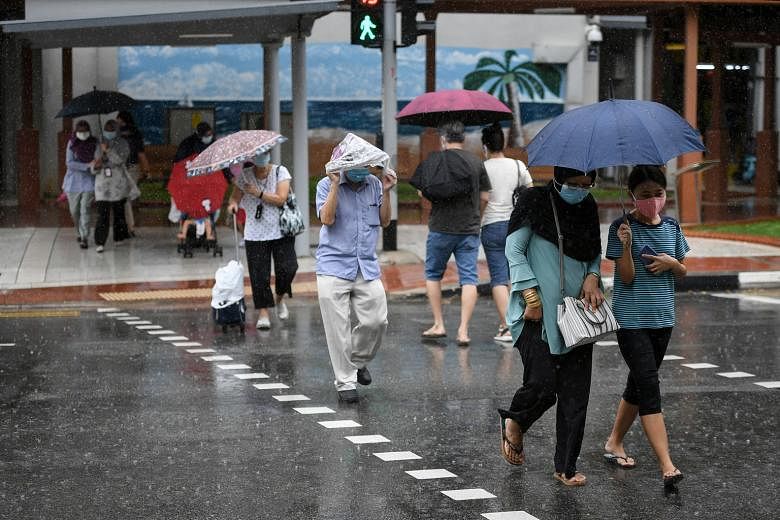Other parts of the world may be experiencing scorching summers but Singaporeans have been donning rainy-day gear.
Rainfall and a particularly wet June have brought cooler weather.
This is expected to persist throughout this month, with the mercury dipping to 22 deg C on some days and more rainfall than in the past fortnight, the weatherman said last Thursday.
Climate experts, however, have pointed out that the cool mid-year weather Singapore is seeing is not unusual. That being the case, this June was still the wettest in the last decade and one of the coolest in the last 20 years.
The total rainfall of 233.8mm exceeded the 213mm recorded in June 2011, and this June's mean temperature of 28.1 deg C was 0.2 deg C lower than the long-term June average.
Last month also saw flash floods in places including Jurong Town Hall Road and New Upper Changi Road, and video clips online showed some vehicles partially submerged near Changi Fire Station.
February and June are usually the driest months of the year, and monthly rainfall - except for January, February and June - has increased from what was recorded between 1875 and 2017, said Professor Benjamin Horton, director of the Earth Observatory of Singapore.
Even so, some years witnessed torrential downpours during June.
On June 16, 2010, the Orchard Road area was hit with the worst flash floods since 1984.
Shops at Liat Towers and the Lucky Plaza basement were flooded, causing millions of dollars in damage.
June 2010's total rainfall was 240.5mm, a 20-year high.
But the wet weather did not stop then, as the following month recorded even more rain. The total rainfall for July 2010 was 298.5mm, also a 20-year high.
According to the National Environment Agency's (NEA) 2010 Annual Weather Review, natural causes for the June 16 torrent included an intense south-west monsoon and a strong and slow-moving Sumatra squall that lingered over the city area for over an hour.
Those extreme weather conditions arose while La Nina - a climate phenomenon that brings cooler weather and more rainfall to the region - was brewing.
To an extent, the weather for June and July in 2010 mirrors the weather of these two months this year.
Weather and climate scientist Koh Tieh Yong said the cooler and wetter weather in June and July this year is partially caused by a cooler sea surface and higher surface pressure in the central tropical Pacific Ocean.
Since winds move from areas of high pressure to areas of low pressure, moist winds converged in equatorial South-east Asia, causing more rain.
Looking at rainfall and mean temperature data for June and July over the past 20 years, there is a clear oscillating rhythm where temperature and rainfall peak in some years and fall in other years, said Associate Professor Koh, who is also a faculty member at the Singapore University of Social Sciences.
The peaks and falls are partially influenced by La Nina and its sibling, El Nino, which brings drier and hotter weather to the region and even droughts at times. La Nina could occur later this year and climate scientists are looking out for more evidence to confirm this.
They also caution against linking the cool June and July weather this year to climate change.
"Although June's rainfall sets a 10-year record for weather, a decade is a brief moment where climate is concerned. Climate refers to long-term averages and trends, usually over 30 to 100 years," said Prof Koh.
NEA's Meteorological Service Singapore website states that Singapore has observed upward trends in rainfall annually, but it is not scientifically possible, using available research information, to pin these trends on global warming, natural climate variability or other causes such as urbanisation.
Said Prof Koh: "Climate change is a reality but one should be mindful that not every record-setting weather should be linked to man-made climate change. Otherwise, it would appear unscientific and may encourage similarly unscientific reactions from climate-change deniers."



